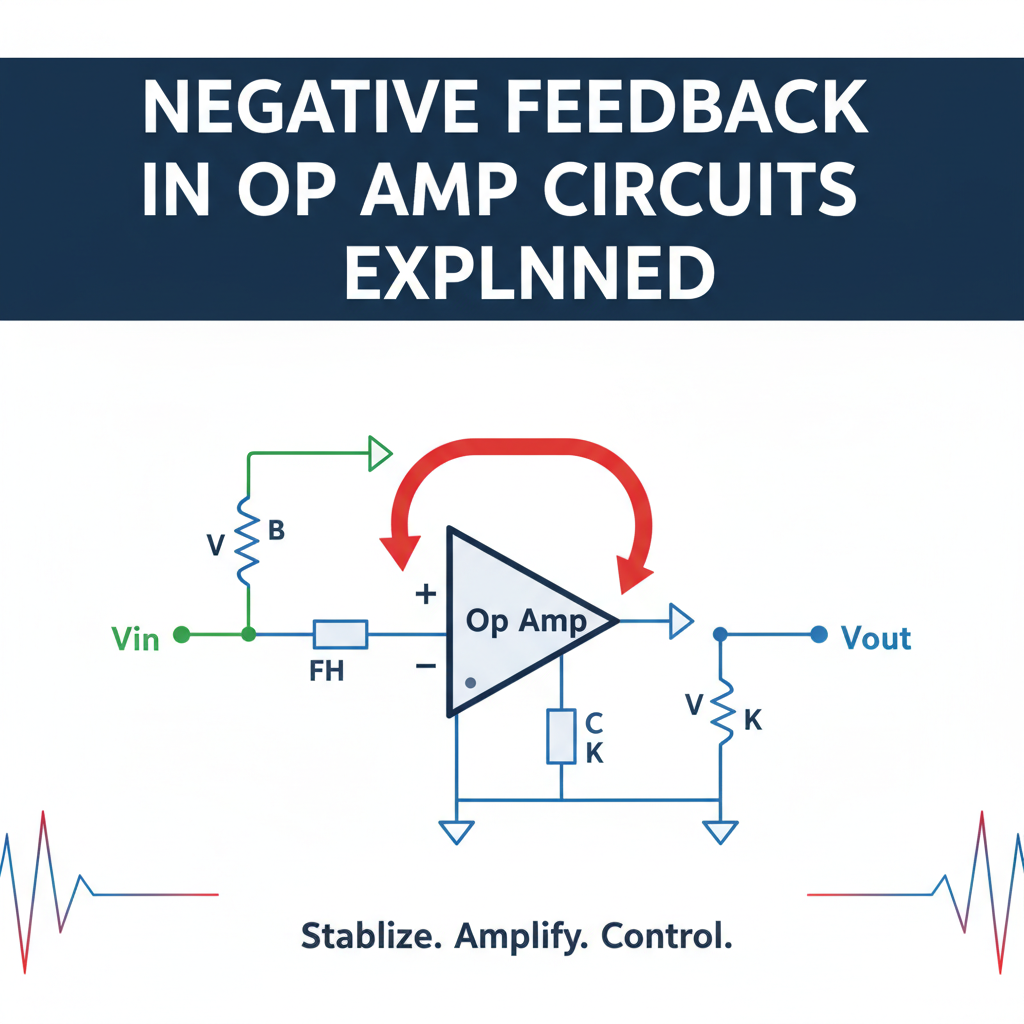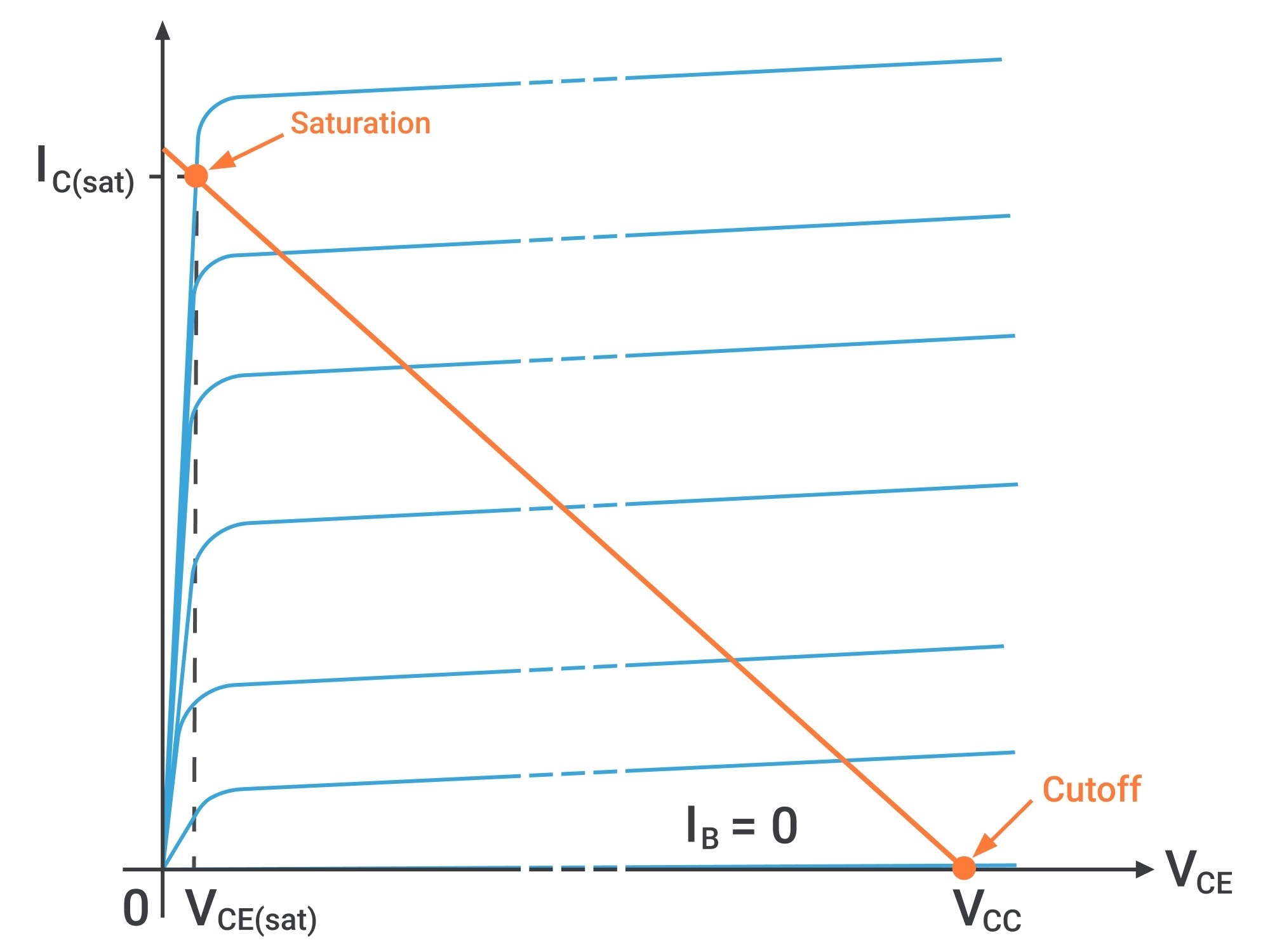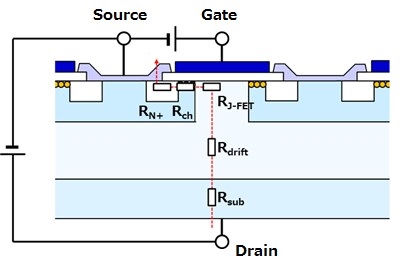Overview
An overvoltage protection circuit limits the output voltage to a safe range when the regulator loop in a switched-mode power supply fails or when user operation causes the output to exceed the design threshold, protecting downstream devices from damage.
This article explains two practical approaches to rapid overvoltage protection design: cost-effective TVS diodes and reliable circuit-level solutions.
1. Cost-effective TVS diodes
TVS, or transient voltage suppressors (also called avalanche breakdown diodes), are diode-form protection devices used for high-energy transient suppression.
1.1 TVS diode characteristics
TVS diodes are available in unidirectional and bidirectional types. Unidirectional TVS diodes are typically used in DC supply circuits; bidirectional devices are used where the voltage polarity alternates.
For a unidirectional TVS used in a DC circuit: under normal operation the TVS is in its off state (high resistance) and does not affect normal operation. When an abnormal overvoltage reaches the TVS avalanche breakdown voltage, the device rapidly switches to a low-resistance state and diverts the transient current to ground, clamping the abnormal voltage to a lower level to protect downstream circuitry. When the transient disappears the TVS returns to its high-resistance state.
Key TVS parameters to consider:
(1) Vrwm: maximum working (standoff) voltage
Vrwm is the maximum continuous peak or DC voltage that can be applied without degrading or damaging the TVS. For AC circuits this is expressed as the RMS value. At Vrwm the TVS is considered non-conducting. The circuit maximum working voltage must be below Vrwm; otherwise the TVS may conduct and disrupt normal operation.
(2) IR: leakage current
Leakage current is the standby current flowing through the TVS at the specified temperature and maximum working voltage. IR is usually measured at Vrwm. For devices with Vrwm ≤ 10 V, a bidirectional TVS typically has about twice the leakage of a unidirectional device. For analog ports and ADC inputs, leakage current can affect sampled values, so lower IR is preferable.
(3) VBR: breakdown voltage
VBR is the voltage measured across the TVS under the specified pulsed DC test current It (typically around 10 mA) or near-avalanche current conditions. Test pulses should be short (e.g., ≤400 ms) to avoid damaging the device. VBR has tolerance limits (VBR MIN and VBR MAX), commonly ±5%.
(4) IPP (peak pulse current) and VC (clamp voltage)
IPP is the peak of a specified pulse current waveform, typically 10/1000 μs for TVS specifications. VC is the peak voltage across the TVS when the specified pulse current IPP is applied. IPP and VC together characterize the TVS capability to absorb surge energy and clamp voltage. Higher IPP indicates better surge-handling capability; for the same IPP, lower VC indicates better clamping.
(5) Junction capacitance Cj
Junction capacitance is a parasitic parameter that matters for high-speed IO protection. Excessive Cj can degrade signal integrity.
1.2 TVS diode selection
Three main considerations when selecting a TVS diode:
- Voltage selection must protect downstream circuitry;
- Introduced junction capacitance must not impair the circuit;
- TVS power margin must meet test standards, and the TVS should not fail before the fuse.
Typical selection steps:
- Choose TVS standoff voltage Vrwm;
- Choose TVS clamp voltage VC;
- Choose TVS power rating (or IPP);
- Evaluate leakage current IR;
- Evaluate junction capacitance Cj.
Details:
(1) Choose Vrwm
The TVS should be non-conducting during normal operation, so Vrwm must be greater than the circuit's maximum operating voltage. However, Vrwm also affects clamp voltage: excessively high Vrwm leads to a higher VC. As a guideline:
Vrwm ≈ 1.1–1.2 × VCC (where VCC is the circuit maximum operating voltage)
(2) Choose VC
VC must be below the maximum transient voltage the downstream circuitry can tolerate. For the chosen TVS, VC is related to VBR and IPP. The selected VC must be less than the maximum allowable voltage Vmax.
VC < Vmax
(3) Choose TVS power rating Pppm (or IPP)
The TVS rated transient power should exceed the maximum transient surge energy expected. Higher power rating increases surge tolerance but also increases package size and cost. For the same voltage rating, VC is similar across power levels while IPP and Pppm differ. Estimate the actual surge current Iactual as:
Iactual = Uactual / Ri (Uactual is the test voltage, Ri is the source/internal resistance)
The TVS should meet the relevant surge waveform standard (for example 10/1000 μs). Leave safety margin: choose Pppm > Pactual.
(4) Evaluate junction capacitance and leakage
For high-speed IO, analog sampling, or low-power devices, minimize Cj and IR.
Selection example
Example parameters: normal VCC = 24 V, maximum operating voltage Vmax = 26 V, downstream circuit maximum transient withstand voltage = 50 V. Test waveform is 8/20 μs at 500 V. The test source internal resistance and power supply static resistance total 2 Ω. Select a suitable TVS.
(1) Choose Vrwm
Vrwm ≈ 1.1–1.2 × VCC = 26–28 V
(2) Choose VC
VC < Vmax = 50 V
(3) Calculate actual test pulse power
Pact = 50 × (500/3) × 1/2 = 4166 W
Based on this, a device such as 5.0SMDJ26A can be selected. For power port use, consider junction capacitance and leakage current according to the circuit requirements.
1.3 Practical circuit application
If the port voltage exceeds the TVS maximum breakdown voltage (VBR MAX), the TVS behaves as a low impedance and dissipates large current and heat; without additional measures the TVS can quickly fail, often becoming open-circuit and leaving the downstream circuit unprotected. It is therefore advisable to place a fuse or a self-resetting PTC upstream of the TVS so that, if the TVS overheats, the fuse will open first and protect both the TVS and downstream circuitry. A self-resetting fuse (PTC) can restore operation after the fault is cleared.
The following example shows an RS485 overvoltage protection scenario. RS485 transceivers typically operate at 5 V and can tolerate limited overvoltage (often up to about 12 V). If a 24 V supply is mistakenly applied to the RS485 A-B lines without overvoltage protection, the transceiver is likely to be physically damaged. A TVS protects against short-duration transients but cannot withstand prolonged overvoltage; it may overheat and fail in under 0.5 s, leaving downstream circuitry unprotected.
Adding a self-resetting PTC upstream of the TVS, with a sufficiently fast trip time, and ensuring TVS clamp voltage VC < VCC, allows the PTC to open before the TVS fails, thereby protecting downstream circuitry.
Calculation approach when using a TVS with a self-resetting PTC:
(1) Preconditions for protection
When the external voltage reaches the TVS breakdown voltage the TVS conducts and its impedance drops, increasing the current. As current increases the PTC heats and its resistance rises until it opens; this protects the downstream circuit. Therefore:
- The TVS power rating must be sufficient to survive until the PTC opens;
- The PTC trip time must be short enough to trip before the TVS fails.
(2) PTC selection
When used for overvoltage protection, PTC selection should satisfy:
- Hold current Ihold > maximum circuit operating current Iwork;
- Short trip time Trip is better; for example, some SMD PTCs trip within 0.02 s at specified overcurrent;
- Maximum overload current Imax: the maximum current the PTC can sustain without permanent damage;
- Maximum operating voltage Vmax: the maximum voltage the PTC can tolerate without permanent damage.
(3) TVS selection
Follow the TVS selection guidelines in section 1.2. Compute the TVS maximum tolerable energy Qtvs from its pulse power rating (spec sheets often give power for 1000 μs; convert to seconds as needed). Compute the actual energy dissipated under the selected scenario:
Qact = VC × Itrip × Tptc
where VC is TVS clamp voltage, Itrip is the PTC trip current, and Tptc is the PTC trip time at that current. Choose a TVS where Qtvs > Qact.
2. Reliable active circuit
A simple overvoltage protection using only a TVS is effective for short, high-energy transients, but TVS devices cannot sustain prolonged overvoltage and may fail if exposed to extended overvoltage or sustained high energy. A more robust approach is an active protection circuit that disconnects the supply when the input voltage exceeds the threshold.
Operation summary:
When Vin is normal, the reference diode is not in breakdown and currents through R3 and R4 are near zero. The PNP transistor base-emitter voltage is approximately 0, so the PNP is off. The PMOS gate-source voltage is set by the resistor divider R5/R6 and the PMOS is on, allowing normal power delivery.
When Vin exceeds the normal input voltage (Vin > Vbr), the reference diode breaks down and its voltage is clamped at Vbr. The PNP transistor conducts (VCE ≈ 0), pulling the PMOS gate so that Vgs ≈ 0 and the PMOS turns off, disconnecting the supply and implementing overvoltage protection.
For higher precision, a dedicated voltage monitor IC can be used for voltage detection and control.
 ALLPCB
ALLPCB







